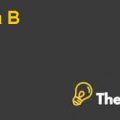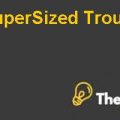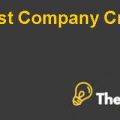
Implementing LEAN Operations at Caesars Casinos Case Solution
Introduction:
The case is about change in management that took place at Caesars Casino by implementing the LEAN operating principles. Caesars Casino’s senior vice president Brad Hirsch, took charge in mid-2014 and realized that there is a need of change in the business. Caesars’ business culture focused on providing excellent customer experience. However, due to the increased competition and new corporate financial goals of the company, they had to improve their facility in Metropolis. Therefore, in order to improve operations Hirsch applied lean operating principles through employee-entered initiatives in three casinos in Tunica, Mississippi. However, he was concerned about whether an employee centered approach would be applicable to their facility in Metropolis or not; or should he develop a new approach to produce satisfactory results in Metropolis facility.
Their facility in Metropolis, Illinois was located on the Ohio River, which opened in 1993. The Metropolis casino operated under the name of Harrah’s. However, in November 2014, the metropolis casino shifted to the original land-based hotel. The new facility of casino intended to improve the casinos’ competitive position through significant amount of investment.
Problem Statement:
The relocation and investment of Harrah’s Metropolis Casino was based on increased competition. The recent passed law had permitted bars, restaurants, and other such enterprises to operate video-gambling machines. The management of Caesars Casino had realized that the investment needed to be made in Hurrah’s facility to offer an entertainment experience that could beat video-gambling options to provide the well-beyond experience to the customers. Therefore, the company had to develop strategies that could increase customer’s expenditure on non-gambling activities and to provide value-added experience in hospitality.
Analysis Part:
Challenges during the Lean implementation process and actions to overcome each challenge:
The economic recession of 2008 saw a decline in revenues and an increase in competition. To sustain the market, the company had to implement the lean principle in their facility in Tunica. Therefore, Hirsch created a lean team in order to improve processes in Tunica. The team decided to develop a series of kaizen workshops in which the employees would be involved from multiple functions and levels to work together to identify the areas of improvements and thus, to target such processes.
The initial challenge that the management was confronted by during the implementation of lean principle was, that the employees had a wrong perception of lean principle and thought that this process would cut their jobs. Therefore, to address this challenge; the kaizen team initiated constant communication with employees in order to aware them about the lean program that has been developed to eliminate the waste process from the operations, which would ultimately improve the customer experience, process’s effectiveness, teach problem-solving tools, and improve employees’ performance. Thus, the lean process would not cut their jobs.
Moreover, the other challenge the kaizen team had faced in implementation of lean related to obtaining of financial support to make these physical changes possible. The company’s top management hesitated in approving the higher-level funds, which were often required to bring physical changes in casino. However, as the kaizen processes began, the top management realized its importance and started to yield tangible benefits due to which hesitation to fund infrastructure changes reduced.
Key performance indicators to oversee the improvements:
No change is considered effective if it fails to generate productive results. Hence, measurement played an important role in indicating areas, which required improvement during the kaizen event. Therefore, some key performance indicators will be suggested to the management of the company in order to measure the kaizen event’s effectiveness. However, the company should improve the processes if the results are unsatisfactory against the measured KPI. (Al Weber, 2005 ).................
This is just a sample partial case solution. Please place the order on the website to order your own originally done case solution









